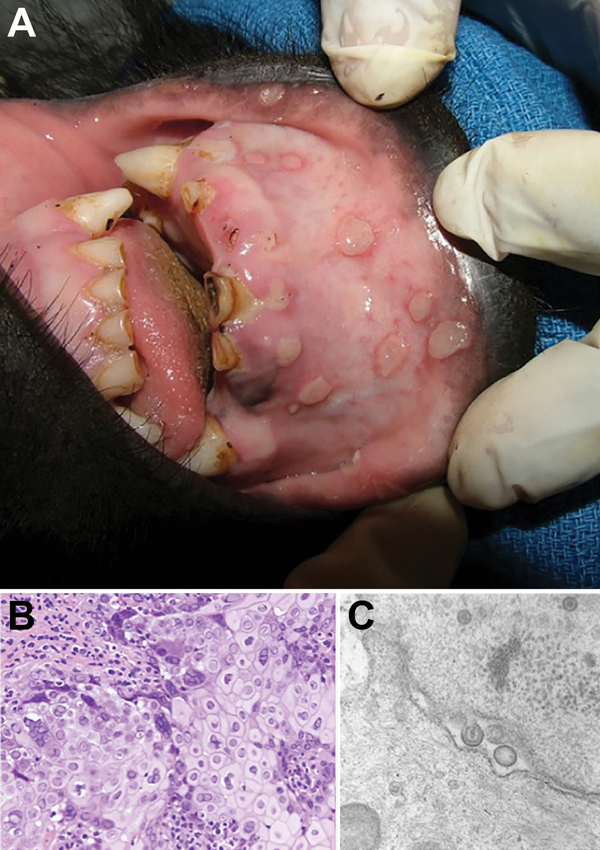Volume 20, Number 11—November 2014
Dispatch
Human Herpes Simplex Virus Type 1 in Confiscated Gorilla
Figure 1

Figure 1. Vesicular stomatitis in a wild-caught juvenile Grauer’s gorilla (Gorilla beringei graueri). Gross lesions, histopathologic examination, transmission electron microscopy, and molecular screening confirmed human herpesvirus type 1 (HSV-1) as the etiologic agent. A) Human HSV-1 lip lesions in a wild-caught juvenile Grauer’s gorilla. B) Section of oral mucosa adjacent to a vesiculo-ulcerative lesion exhibits epithelial cell necrosis, cytoplasmic swelling, nuclear chromatin margination (sometimes with discrete Cowdry type A inclusions), and multinucleated syncytia typical of herpesviral cytopathic effects (hematoxylin and eosin stain). Original magnification ×200. C) Electron micrograph of the same lesion demonstrates intranuclear, unenveloped virions ≈100 nm in diameter that are budding through the nuclear membrane to form enveloped virions ≈140 nm in diameter; morphologic features of both are compatible with a herpesvirus. Original magnification ×60,000.
1Current affiliation: ARMAC Veterinary Group, Biggar, South Lanarkshire, Scotland, UK.
2Current affiliation: Rhode Island School of Design, Providence, Rhode Island, USA.